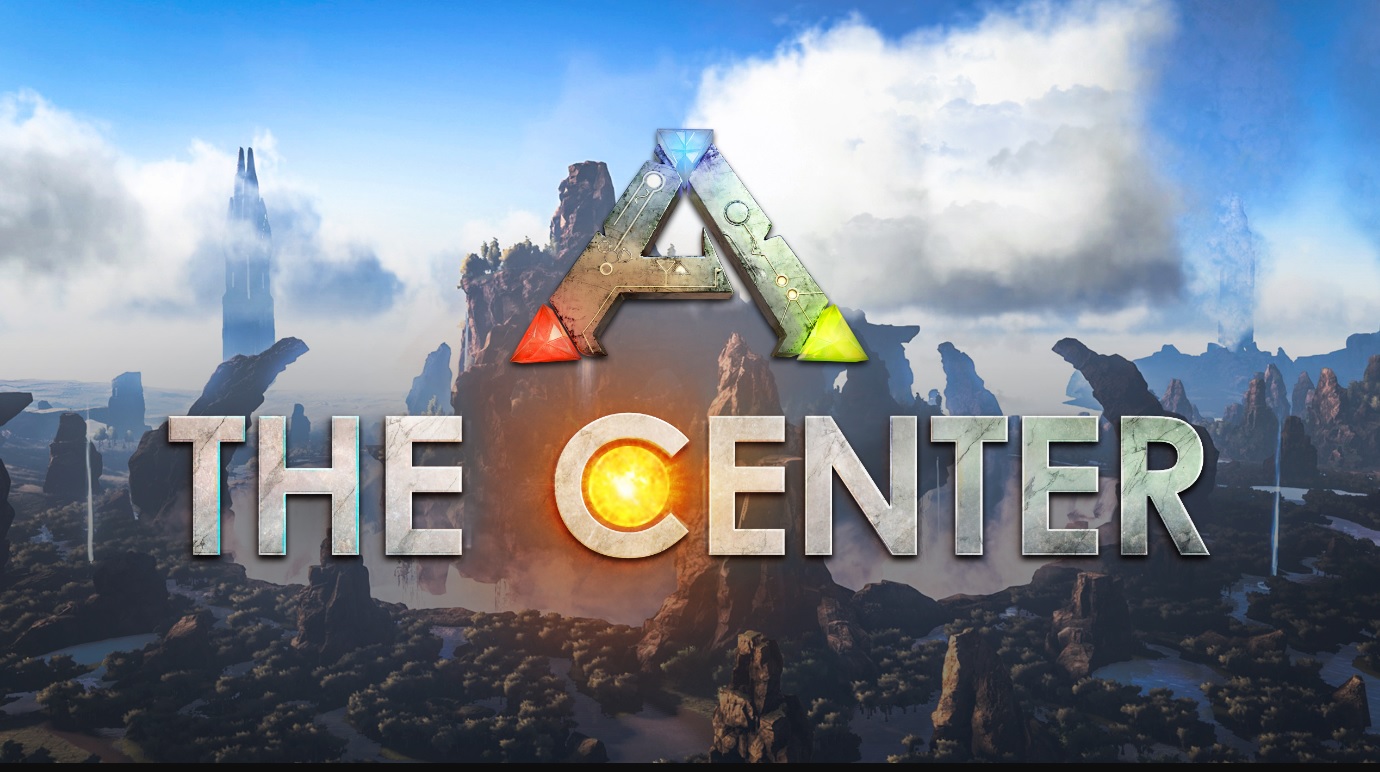Introduction
Welcome to the exciting world of Ark: Survival Evolved! With its stunning open-world environment and challenging gameplay, Ark has captured the hearts of gamers around the globe. As you embark on your journey through this prehistoric landscape, one important question arises: what graphics card do you need to fully enjoy the immersive experience?
Ark: Survival Evolved is a visually demanding game that requires a capable graphics card to run smoothly. The graphics card is essentially the backbone of your gaming system, responsible for rendering all the stunning visuals and effects that bring the game to life.
However, finding the right graphics card can be a daunting task, especially with the ever-evolving technology and a plethora of options available in the market. In this article, we will guide you through the process of choosing the perfect graphics card for Ark, whether you’re a casual gamer or a hardcore enthusiast looking for the ultimate gaming experience.
Before we dive into the specific graphics card requirements, it’s important to understand the system requirements of Ark: Survival Evolved. These requirements serve as a baseline for your gaming setup and help you determine which graphics card will meet your needs.
Keep in mind that the minimum and recommended system requirements may vary depending on the version of Ark you plan to play, so be sure to check the official website or game documentation for the most up-to-date information.
Understanding the System Requirements
Before delving into the specific graphics card requirements for Ark: Survival Evolved, it’s crucial to have a good understanding of the overall system requirements. By knowing what your gaming setup should entail, you can ensure a smooth and enjoyable gaming experience without any frustrating performance issues.
The system requirements typically encompass a variety of components, including the processor (CPU), memory (RAM), storage, and of course, the graphics card (GPU). These requirements are designed to provide a baseline for the hardware specifications needed to run the game optimally, taking into account factors such as graphics rendering, physics simulation, and overall performance.
For Ark: Survival Evolved, the minimum system requirements are as follows:
- Operating System: Windows 7/8.1/10 (64-bit versions)
- Processor: Intel Core i5-2400/AMD FX-8320 or equivalent
- Memory: 8 GB RAM
- Graphics: NVIDIA GTX 670 2GB/AMD Radeon HD 7870 2GB or equivalent
- DirectX: Version 10
- Storage: 60 GB available space
Please note that these are the minimum requirements for running Ark: Survival Evolved, meaning the game will run on your system but not necessarily at the highest graphical settings or smoothest performance. If you want to fully immerse yourself in the stunning visuals and maintain a consistent frame rate, it is highly recommended to meet or exceed the recommended system requirements.
The recommended system requirements for Ark: Survival Evolved are as follows:
- Operating System: Windows 10 (64-bit version)
- Processor: Intel Core i7-6700K/AMD Ryzen 5 1600X or equivalent
- Memory: 16 GB RAM
- Graphics: NVIDIA GTX 1070 8GB/AMD Radeon RX Vega 56 8GB or equivalent
- DirectX: Version 12
- Storage: 60 GB available space
Meeting these recommended requirements will ensure a smoother and more visually stunning gaming experience, as well as provide the necessary power to handle the intense gameplay and potential mods you may choose to install.
Now that we have a clear understanding of the system requirements for Ark: Survival Evolved, let’s dive into the specific graphics card requirements and explore the options available for both minimum and recommended gameplay.
Minimum Graphics Card Requirements for Ark
When it comes to running Ark: Survival Evolved at the minimum system requirements, the graphics card plays a crucial role in delivering a satisfactory gaming experience. While the minimum requirements may allow the game to run, keep in mind that you may need to make some sacrifices in terms of graphical settings and performance.
The minimum graphics card recommended for Ark is the NVIDIA GTX 670 2GB or the AMD Radeon HD 7870 2GB, or any equivalent cards. Since Ark is a visually demanding game, having a graphics card with at least 2GB of VRAM is crucial for rendering complex environments, detailed textures, and impressive visual effects.
These minimum graphics cards will allow you to run the game at lower graphical settings and a lower resolution, such as 1080p or even 720p, to maintain a decent frame rate. However, it’s important to note that you may experience occasional frame drops or stuttering in more demanding scenarios, such as during intense battles or when exploring areas with a high level of detail.
If you’re on a tight budget or have an older gaming system, these minimum graphics cards are a reasonable starting point. However, if you want to fully enjoy the rich visuals and smooth gameplay that Ark has to offer, it is highly recommended to upgrade to a higher-tier graphics card that meets or exceeds the recommended requirements.
Upgrading to a better graphics card will not only provide a significant improvement in performance but will also future-proof your gaming system, allowing you to play other visually demanding games without any issues. It’s important to consider the long-term investment and the potential for future upgrades when making a decision about your graphics card choice.
In the next section, we will explore the recommended graphics card options that will enable you to fully immerse yourself in the stunning world of Ark: Survival Evolved.
Recommended Graphics Card for Enhanced Gameplay
If you’re looking to elevate your Ark: Survival Evolved experience to the next level, investing in a recommended graphics card is the way to go. These cards are designed to handle the intense graphical demands of the game, allowing you to enjoy crisp visuals, realistic environments, and smooth gameplay without any compromises.
The recommended graphics card for Ark is the NVIDIA GTX 1070 8GB or the AMD Radeon RX Vega 56 8GB, or any equivalent cards. These high-performance graphics cards are equipped with ample VRAM to handle the detailed textures and complex rendering requirements of Ark. With their powerful GPUs, you can crank up the graphical settings to the max, enabling you to explore the vast world of Ark in all its glory.
By upgrading to a recommended graphics card, you’ll experience a significant improvement in performance, especially at higher resolutions such as 1440p or even 4K. You’ll be able to enjoy smooth gameplay with a more stable frame rate, allowing you to fully immerse yourself in the immersive world of Ark with no lag or stuttering.
Furthermore, a recommended graphics card provides room for future growth and ensures compatibility with future game updates or expansions as the graphics requirements continue to evolve. Investing in a powerful graphics card now will allow you to enjoy other visually demanding games and upcoming releases without worrying about performance limitations.
It’s important to note that while the recommended graphics cards provide excellent performance for Ark: Survival Evolved, they might come at a higher price point. However, they offer great value in terms of the enhanced gaming experience and long-term performance they provide.
When choosing a graphics card, consider not only the brand and model but also factors like cooling solutions, warranty, and customer support. It’s always a good idea to read reviews and compare different options to find the best fit for your needs and budget.
In the next section, we’ll discuss some affordable graphics card options that still offer decent performance for Ark, catering to gamers who are on a more limited budget.
Choosing an Affordable Graphics Card Option
Not everyone has the budget to invest in high-end graphics cards, but that doesn’t mean you can’t enjoy a decent gaming experience in Ark: Survival Evolved. There are affordable graphics card options available that can still provide satisfactory performance while keeping your wallet happy.
When shopping for an affordable graphics card, it’s important to prioritize value for money and consider your specific gaming needs. While these budget-friendly options may not offer the same level of performance as top-tier cards, they can still deliver a respectable gaming experience at lower graphical settings.
One popular affordable graphics card option for Ark is the NVIDIA GTX 1050 Ti or the AMD Radeon RX 570. These cards are known for their solid performance and reasonable price tag. While they may not meet the recommended system requirements, they can handle Ark at 1080p resolution with medium to high settings, allowing you to enjoy the game without major compromises.
Another budget-friendly option is the NVIDIA GTX 1650 or the AMD Radeon RX 580. These cards offer a step up in performance compared to the GTX 1050 Ti and RX 570, providing smoother gameplay at higher settings and even enabling you to play at 1440p resolution with some adjustments.
When choosing an affordable graphics card, make sure to consider factors such as the VRAM capacity, power consumption, and cooling solutions. It’s also advisable to read reviews and compare different models to find the best option that suits your budget and gaming requirements.
In addition to purchasing a brand new graphics card, you may also consider buying a used or refurbished card. This can be a cost-effective option, but it’s important to do thorough research, check the condition of the card, and make sure it is compatible with your system.
Remember, an affordable graphics card can still provide a satisfying gaming experience in Ark, especially if you’re willing to make some compromises in terms of graphical settings and resolution. It’s all about finding the right balance between performance, budget, and your expectations for gameplay quality.
In the next section, we’ll explore the importance of considering future upgrades when choosing a graphics card for Ark: Survival Evolved.
Considering Future Upgrades
When it comes to choosing a graphics card for Ark: Survival Evolved, it’s essential to consider the potential for future upgrades. As technology advances, new games are released, and graphical demands increase, having a graphics card that can adapt and handle future requirements is crucial.
Investing in a graphics card that goes beyond the minimum system requirements and meets or exceeds the recommended specifications can provide a better gaming experience not only now but also in the years to come. This ensures that you won’t have to upgrade your graphics card every time a new game with higher demands is released.
Consider the future lifespan of the graphics card you’re interested in. Look for models with ample VRAM and a powerful GPU that can handle upcoming games and advancements in graphics technology. It’s better to invest in a slightly more powerful graphics card now than to find yourself needing an upgrade shortly after.
Additionally, keep in mind the potential for upgrading other components of your gaming system in the future. If you plan on upgrading your processor, memory, or storage, it’s important to choose a graphics card that will still be compatible and provide optimal performance with the new components.
Before making a purchase, check if the graphics card you’re considering has room for overclocking or if there are aftermarket cooling options available. Overclocking can provide a performance boost, allowing your graphics card to handle more demanding games. However, be cautious and ensure proper cooling to prevent overheating and potential damage to your card.
Another consideration for future upgrades is the possibility of adding multiple graphics cards in a SLI (Scalable Link Interface) or CrossFire configuration. This allows you to combine the power of two or more graphics cards to further enhance performance. However, not all games are optimized for SLI or CrossFire, so research compatibility beforehand.
Ultimately, future upgrades will depend on your individual needs and budget. If you’re a dedicated gamer who wants to stay ahead of the curve, investing in a powerful graphics card with future expansion options is a wise choice. However, if you’re more casual and content with playing games at moderate settings, a more budget-friendly card may suffice.
In the next section, we’ll discuss the potential benefits of overclocking your graphics card to further enhance Ark: Survival Evolved performance.
Overclocking Your Graphics Card for Better Performance
If you’re looking to squeeze out every last drop of performance from your graphics card for Ark: Survival Evolved, overclocking can be a viable option. Overclocking involves increasing the clock speeds of your graphics card, allowing it to run at higher frequencies and potentially delivering better performance.
Before diving into overclocking, it’s important to understand the risks and limitations involved. Overclocking can increase the heat generated by your graphics card, potentially leading to higher temperatures and reduced lifespan if not properly managed. Additionally, overclocking may void the warranty of your graphics card, so proceed with caution.
To overclock your graphics card, you will need to use specialized software provided by the manufacturer, such as MSI Afterburner or EVGA Precision X1. These programs allow you to adjust various parameters, including the core clock, memory clock, and fan speed.
Start by gradually increasing the core clock and memory clock in small increments, such as 10-25 MHz at a time. Run stress tests or benchmarking tools, such as FurMark or Unigine Heaven, to monitor the stability and temperature of your graphics card during the overclocking process.
Keep an eye on the temperatures to ensure they stay within safe limits. If temperatures become too high, you can adjust the fan speed or consider investing in aftermarket cooling solutions like a better GPU cooler or additional case fans.
It’s important to note that not all graphics cards are equal when it comes to overclocking potential. Some models may have better cooling systems or higher-quality components, enabling them to reach higher overclocks. Experimentation and patience are key when finding the optimal overclocking settings for your specific graphics card.
Overclocking can provide a noticeable performance boost in Ark: Survival Evolved, allowing you to achieve higher frame rates and smoother gameplay. It can be especially beneficial in CPU-bound scenarios, where the game heavily relies on the graphics card for rendering.
However, it’s essential to stress test your graphics card after each overclocking adjustment to ensure stability. Unstable overclocks can lead to crashes, artifacts, or even system instability. If you encounter any issues, revert to the default clock speeds or dial back the overclock until stability is regained.
Overclocking your graphics card can be an exciting way to maximize the performance of Ark: Survival Evolved, but it’s not without risks. Proceed with caution, monitor temperatures, and be prepared for potential instability. Additionally, ensure you have adequate cooling and a reliable power supply to support the increased power demands of an overclocked graphics card.
In the next section, we’ll provide tips for optimizing the graphics card settings in Ark and improving the overall gaming experience.
Tips for Optimizing Graphics Card Settings for Ark
Optimizing your graphics card settings is essential for achieving the best possible performance and visual experience in Ark: Survival Evolved. Fine-tuning these settings can help you strike a balance between smooth gameplay and stunning graphics. Here are some tips to optimize your graphics card settings for Ark.
1. Update Graphics Card Drivers: Ensure that you have the latest drivers installed for your graphics card. Updated drivers often include performance optimizations and bug fixes that can enhance your gaming experience.
2. Adjust In-Game Graphics Settings: Experiment with different graphics settings within the game. Start by selecting the preset that matches your system’s capabilities (e.g., low, medium, high). Then, tweak individual settings such as texture quality, shadow quality, and anti-aliasing to find the right balance between visual quality and performance.
3. Resolution and Display Mode: Consider lowering the resolution or opting for a windowed or borderless windowed display mode instead of full-screen. Lower resolutions can significantly improve performance while still maintaining an enjoyable gaming experience.
4. V-Sync and Frame Rate: Disable vertical sync (V-Sync) if you experience input lag or want to achieve higher frame rates. However, be aware that disabling V-Sync may introduce screen tearing. Consider utilizing adaptive sync technologies like G-Sync (NVIDIA) or FreeSync (AMD) if your monitor supports them.
5. Texture Streaming: Enable the texture streaming option in Ark’s settings. This feature optimizes the loading and rendering of textures, ensuring smoother gameplay and reducing VRAM usage.
6. Ambient Occlusion: Adjust the ambient occlusion setting to your preference. Lower values or disabling it altogether can improve performance, while higher values enhance the visual depth and realism of the game.
7. Dynamic Resolution Scaling: Enable dynamic resolution scaling if available in the game’s settings. This feature adjusts the game’s resolution on the fly to maintain a consistent frame rate during demanding scenes.
8. Graphics Card Control Panel Settings: Access your graphics card control panel (NVIDIA Control Panel or AMD Radeon Settings) and explore additional settings. These settings may include adjusting power management, enabling multi-display support, or setting performance profiles for specific games.
9. Background Processes: Close unnecessary background processes and applications that may be consuming system resources. This can free up CPU and GPU resources for Ark, allowing for smoother gameplay and better graphics performance.
10. Monitor Refresh Rate: Ensure that your monitor’s refresh rate is set to its maximum supported value in both the control panel settings and Windows Display settings. Higher refresh rates can provide a smoother and more responsive gameplay experience.
Remember to test the performance impact of each setting change and find the right balance between performance and visual quality. Every system is unique, so experimentation is key to finding the optimal settings for your specific hardware configuration.
In the next section, we’ll discuss how to troubleshoot potential graphics card issues that may arise while playing Ark: Survival Evolved.
Troubleshooting Graphics Card Issues in Ark
While playing Ark: Survival Evolved, you may encounter graphics card issues that can hinder your gaming experience. Here are some common problems and troubleshooting steps to resolve them.
1. Graphics Card Driver Issues: Ensure that you have the latest graphics card drivers installed. Outdated or incompatible drivers can cause graphical glitches or game crashes. Visit the manufacturer’s website to download and install the most recent drivers that are specifically optimized for Ark.
2. Graphics Artifacts or Visual Glitches: If you notice graphical artifacts or visual glitches in Ark, it could indicate an issue with your graphics card or settings. Try lowering the graphical settings within the game to reduce the strain on your card. Additionally, double-check that your graphics card is not overheating, as excessive heat can cause graphical artifacts.
3. Game Crashes or Freezes: If Ark crashes or freezes during gameplay, check for any software conflicts or background processes that may be interfering. Close unnecessary applications and ensure that your system meets the game’s minimum system requirements. If the issue continues, try reinstalling the game or verifying the game files through the game launcher or platform.
4. Frame Rate or Performance Issues: If you’re experiencing low frame rates or inconsistent performance in Ark, you can try the following steps:
- Lower the graphical settings, such as reducing texture quality, shadow quality, and anti-aliasing.
- Ensure your graphics card is not overheating by monitoring the temperature using software like MSI Afterburner, and clean any dust or debris from the card and fans.
- Check for power management settings in your graphics card’s control panel and ensure they are optimized for performance rather than energy savings.
- Close any unnecessary background applications or processes that may be consuming system resources.
- Consider overclocking your graphics card (if supported and done cautiously) to potentially boost performance.
5. Compatibility Issues with Mods or Add-ons: Some third-party mods or add-ons in Ark may not be fully compatible with your graphics card or specific driver versions. If you experience issues when using mods or add-ons, consider disabling or removing them to see if the problem persists. It’s also a good idea to check for any updates or patches for the mods, as developers often release updates to address compatibility issues.
6. Multiple Display Setup: If you’re using multiple displays while playing Ark, ensure that your graphics card supports multi-display configurations. Check the graphics card’s control panel settings to verify that the displays are properly detected and configured. In some cases, disconnecting additional monitors during gameplay can improve performance.
If you’ve tried the troubleshooting steps above and are still facing graphics card issues in Ark, it may be worth seeking support from the game’s official forums, subreddit, or reaching out to the game’s technical support team. They may be able to provide further guidance or specific solutions tailored to your situation.
Remember that troubleshooting graphics card issues can vary based on the specific hardware, software, and configurations in your system. Patience and persistence are key to finding the right solutions and optimizing your gaming experience in Ark: Survival Evolved.
Now that we’ve discussed troubleshooting, let’s conclude with a summary of the key points covered in this article.
Conclusion
Choosing the right graphics card for Ark: Survival Evolved is crucial for a smooth and visually immersive gaming experience. Understanding the system requirements is the first step, ensuring that your gaming setup meets or exceeds the minimum and recommended specifications.
While the minimum graphics card requirements will allow the game to run, they may come with limitations in terms of graphical settings and performance. Investing in a recommended graphics card, such as NVIDIA GTX 1070 8GB or AMD Radeon RX Vega 56 8GB, will provide optimal performance and enable you to enjoy Ark at its full potential.
If you’re on a budget, there are affordable options available, like the NVIDIA GTX 1050 Ti or AMD Radeon RX 570, that can still deliver satisfactory performance in Ark. Additionally, considering future upgrades and the potential for overclocking can help you maximize the lifespan and performance of your graphics card.
Optimizing graphics card settings, updating drivers, and troubleshooting common issues can further enhance your Ark gaming experience. Adjusting in-game graphics settings, ensuring proper cooling, and monitoring temperatures are all part of finding the perfect balance between visual quality and performance.
Remember, every system is unique, and finding the optimal graphics card settings may require some experimentation and adjustments. Patience and persistence are key to achieving the best possible performance in Ark: Survival Evolved.
Now armed with the knowledge of graphics card requirements and optimization tips, you can confidently choose the right graphics card and embark on an epic adventure through the captivating world of Ark: Survival Evolved.

























